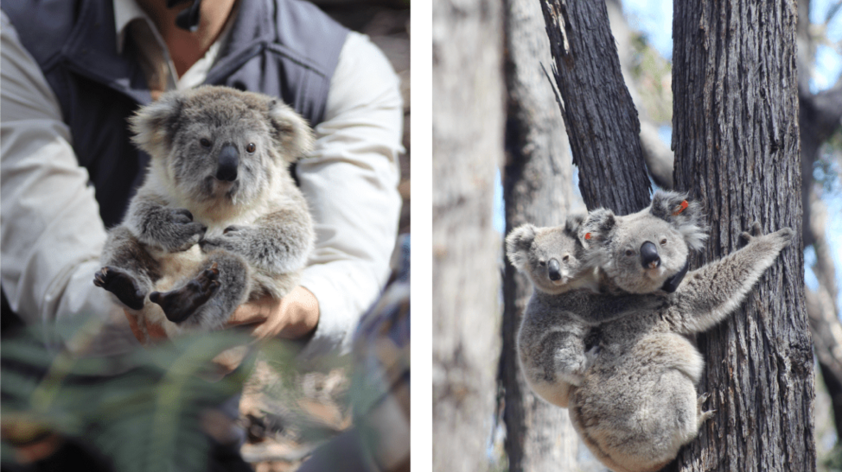
What’s next after the Australian bushfires in the Greater Blue Mountains Region?
For the past few years we have worked with our partners at Science for Wildlife in The Greater Blue Mountains, NSW, Australia by participating in their ongoing koala conservation research. This past December they experienced catastrophic fires in that area and as they were recovering from those, the coronavirus pandemic hit. At this time, while we cannot travel to Australia to help, we were able to financially support their critical post-fire field work, which, although modified, still continues in this time of COVID. In the words of their founder, Dr. Kellie Leigh, here is their latest update on their important conservation work.
Thanks to some amazing support from our core project partner San Diego Zoo Global, and funding for our research under the NSW Koala Strategy, we are now planning some large-scale surveys across the Greater Blue Mountains region to assess where koalas survived the fires. This is vital information for planning conservation action and population recovery.
We need to know where the koalas are so we can allocate resources to protect them. For example, if the surviving koalas are mostly in areas that have been developed by people, which were also asset protection zones and didn’t burn, then those koalas face human-caused threats including vehicle strike, domestic dog attack, and ongoing habitat loss and fragmentation. Being forced out of preferred habitats by fire can also make koalas more susceptible to disease. With so much of the protected area network burnt, koalas in asset protection zones are likely to be important for potentially recolonizing wilderness areas.
If there are pockets of surviving koalas, then we need to know where they are, how many there are, and how connected they are to each other as that will impact if the population can grow again. We also need to learn more about the state of the trees in their habitats and the rate of vegetation recovery after fire, to understand if there will be enough quality habitat around for them to survive.
But koalas are not the only species that suffered during the bushfires. Due to the massive and unprecedented scale of the fires, species that were listed as common or with a conservation status of least concern could now be in trouble. We don’t know how our wildlife has fared and so a critical step is to survey for surviving wildlife so that we can develop plans to protect them before the next large fires come.
For our next step we’re about to launch into large-scale surveys of the fire zone, looking for koalas and hope to scale up this work to monitor other species in the fire zone, to get a better understanding of ecosystem recovery.
Kellie Leigh, Ph.D., is the Executive Director at Science for Wildlife.













